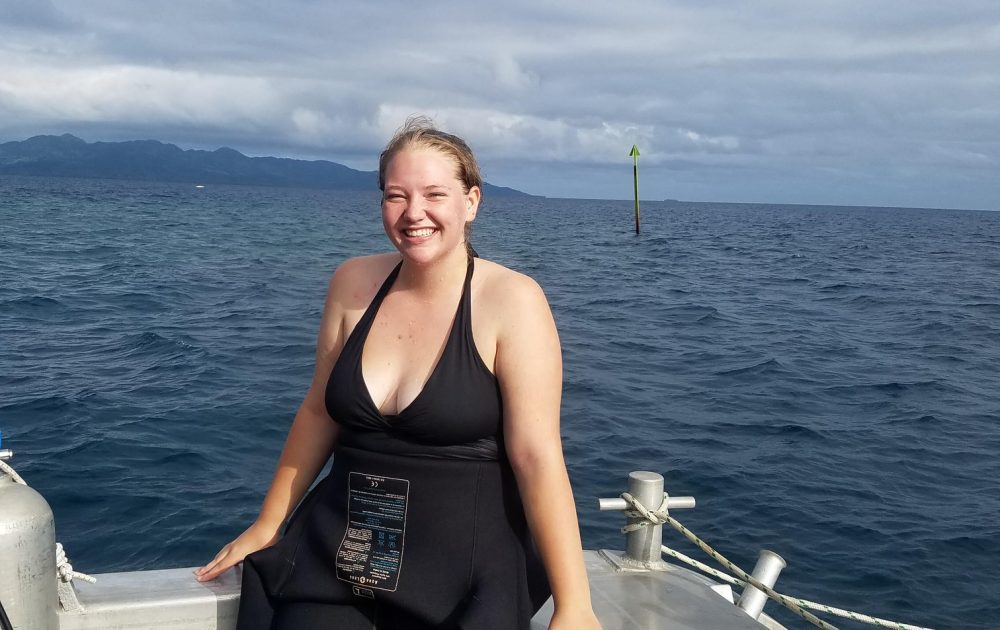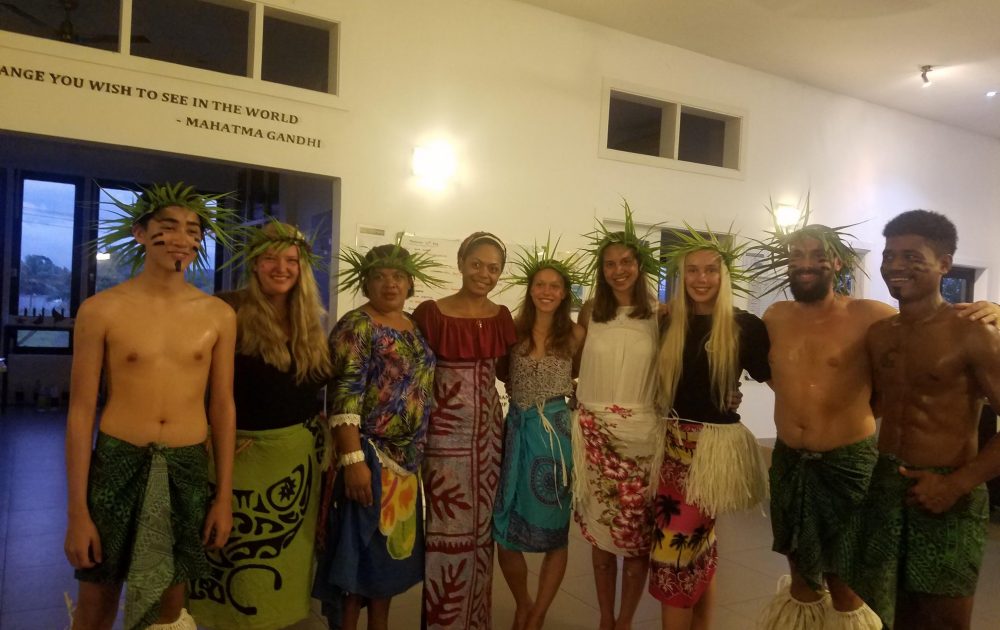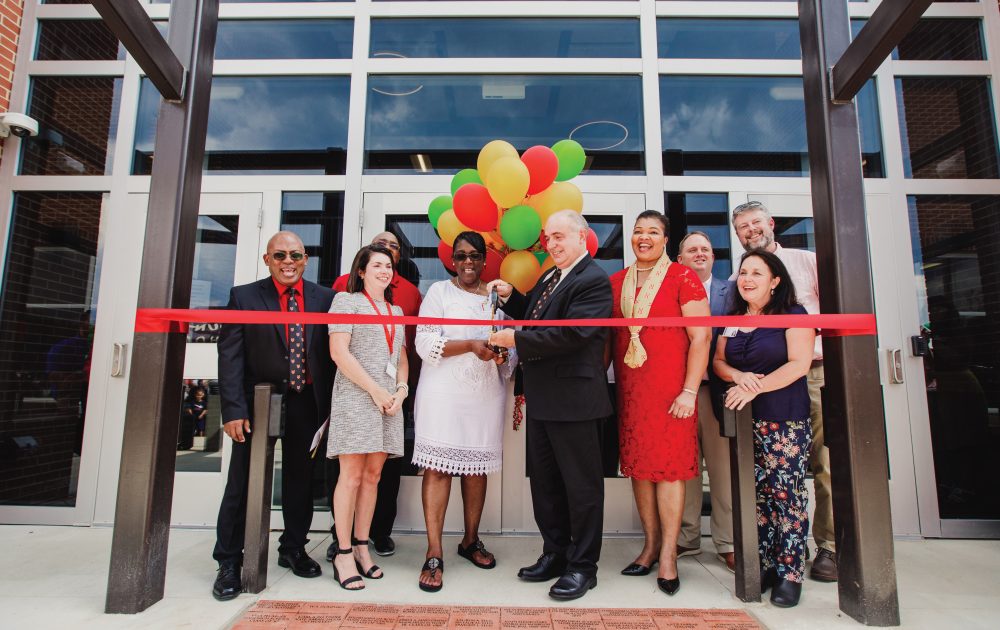
Photos Provided by Marley Garrard
For as long as I can remember, I have loved sharks. I have always dreamt of being in the water with them. In eighth grade, I saw that dream become a possibility, and this summer that possibility became a reality.
In eighth grade, while working on a school project, an article popped up describing an opportunity for people to travel abroad and work with sharks in Fiji through a company called Projects Abroad. I was immediately intrigued. It took some convincing but eventually I was able to get my parents to agree to let me go as long as I saved up the money for the project. I spent the next three years working multiple jobs, babysitting and doing everything I could to save the money I needed for the trip. After years of waiting, anticipating and saving every penny I earned, this summer was finally time for me to set off on my journey.
This trip was my first time leaving the country and flying on a plane, and I was alone. So, I was very nervous. Walking through the airport after leaving my mom outside security, everything finally began to feel real. It was terrifying. However, I made it to my gate with lots of time to spare which gave me time to relax, and it was calming to know that I was on schedule. Or so I thought. As it turns out, I was at the wrong gate. I missed my flight.
Flash forward two hours, after sobbing and approaching anyone I could to try to find help, I finally found someone who put me on standby for the next flight out. In the end everything worked out, but running around the airport scrambling to find another flight is definitely an experience that I will never forget.
After over 30 hours of travel, including a layover in LAX, I finally landed in Nadi, Fiji. At the airport, two women who worked for Projects Abroad met me and put me on a bus to Pacific Harbor where the project was based. The entire three hour bus ride, all I could do was stare out the window. I was amazed at how beautiful everything was. When I arrived, it was the weekend for the project, so I had a couple of days to adjust to the 16-hour time difference. This also gave me an opportunity to get to know the other volunteers and learn my way around Pacific Harbor.
Over the next few days, I took a scuba diving course to get my open water certification. I was so excited to get into the water and see the reefs and wildlife that I had been dreaming about for the past three years. My first breath underwater was nothing like I expected. It was uncomfortable and difficult. I found myself questioning why I was doing this. It seemed like something that I would not enjoy. However, once we moved out of the pool and into the open water, breathing became much easier. I guess I either got used to it, or was too distracted by the beauty that was all around me. During my training dives, I didn’t actually see any sharks like I’d been hoping.
However, my first coral dive with the project was when I got an amazing surprise.
As we were diving and exploring the reef, I was following close behind the divemaster who was leading our group. We approached an area that had a sandy bottom between two reef formations when, suddenly, the divemaster turned and signaled to me. Placing his hand on his head like a dorsal fin on his forehead, he indicated that there was a shark and pointed ahead of us. Looking around, I couldn’t see anything. He continued to point, made a gesture to say that it was sleeping, and motioned for me to follow him. As we got down lower, and swam forward, suddenly a shape came into view. Much larger than I had ever pictured, there on the seafloor, was a beautiful zebra shark. I watched in awe as the shark woke up and gracefully swam up the side of the reef and disappeared on the other side. The whole experience felt like a dream. I knew that I was going to see a shark eventually, but never did I imagine that my first shark would be a zebra shark, as they are considered pretty rare to see in the area. In fact, some volunteers had told me that they talked to a scientist who had come to Fiji to study them and hadn’t seen a single one in the several months that he had been in the water.
I never saw another zebra shark. However, over time on various coral, survey and shark-feed dives, I got the opportunity to see many other beautiful species (bull sharks, sicklefin lemon sharks, tawny nurse sharks, silvertips, blacktips, whitetips, and even grey reefs). In addition to various species of sharks, I also got to see a variety of impressive fish such as giant groupers and trevallies, and even a couple of sea turtles.

Work with the wildlife didn’t stop on days we weren’t diving, though. During my time in Fiji, I had the opportunity to go on two evening tagging trips where we went out on boats with locals and set lines, checking them periodically to see if we had caught any young sharks that we could tag and document. Sadly, on these trips, we didn’t catch anything. One day, while doing land-based work back at our apartments, however, we got a call from nearby Galoa Village where some fishermen had accidentally caught a white-spotted guitarfish (aka bottle-nosed wedgefish). We all hopped into the van and rushed over to the village to tag it. It was a juvenile, so it was fairly small (probably under two feet long), but it was a really cool experience to know that the work we did that day would contribute to a larger scientific database. Plus, any day I got to see a shark was a good day in my book.
In addition to survey dives, where we documented both shark and indicator fish species we saw along the dives, the project also consisted of a lot of land-based work. The largest land branch of the project was the mangrove reforestation project. Mangroves are trees and plants that have the special ability to grow in salty water and act as a nursery for sharks and many other fish species. They also help to prevent erosion and act as a natural barrier from storms. Because of this, a large goal of the project was to plant as many mangroves as possible since so many have been cut down to make way for resorts and tourist destinations. We spent several days every week collecting propagules (mangrove seedlings), planting mangroves in various nurseries or tending to our own nursery back at the apartments. We also did some sustainability work (while I was there we were building a greenhouse at the apartments so that we could grow our own food) and outreach where we talked to locals and schools about why sharks are so important. We also did one “dirty day” each month, where the volunteers go out and do something to help the community. In our case, we went and painted the walkway at a school in the nearby town of Navua.
This trip, for me, was about fulfilling a life-long dream and learning to be brave in a setting I was not accustomed to. Saving for the trip taught me to stay the course and the memories I have made will last a lifetime.










